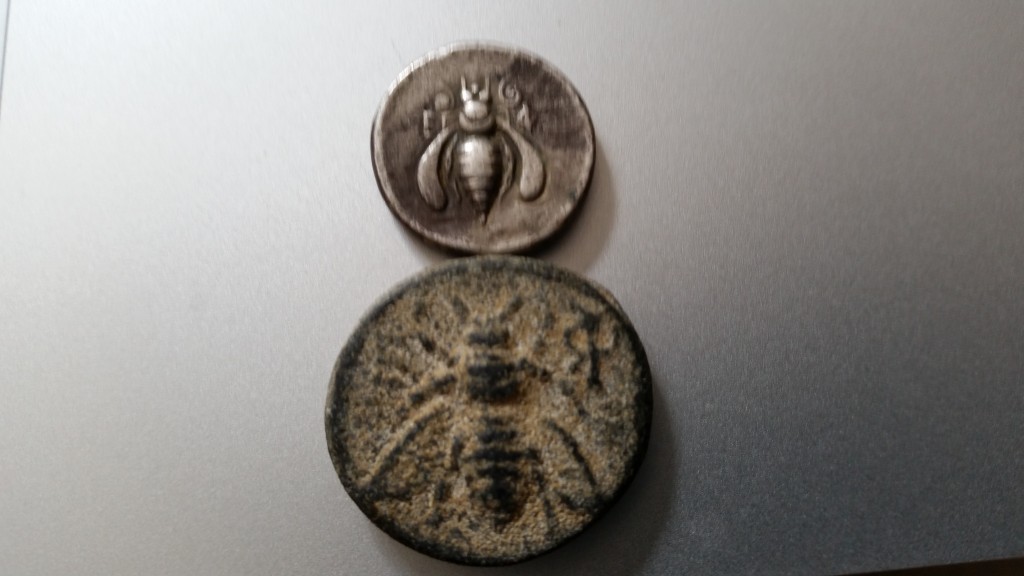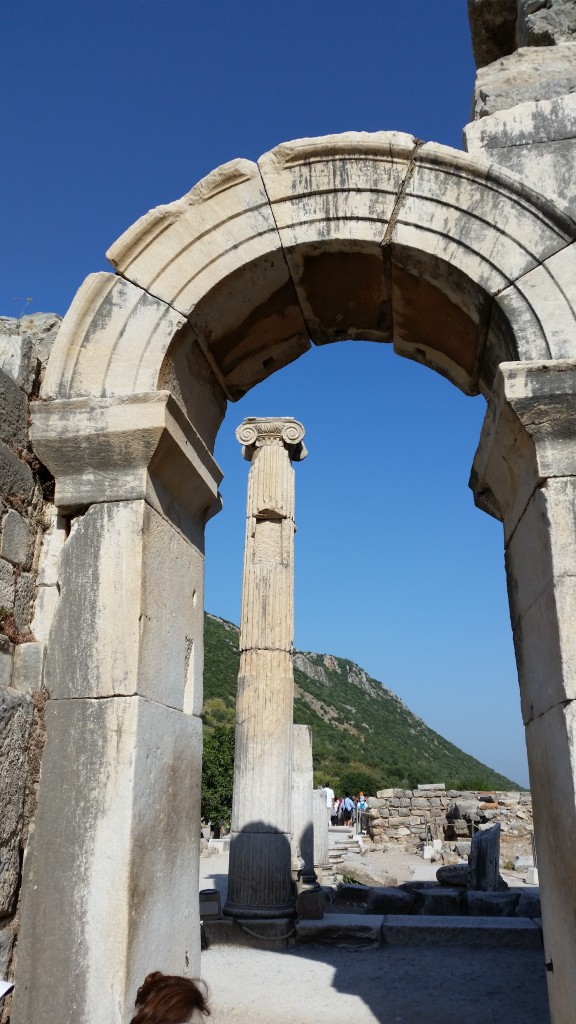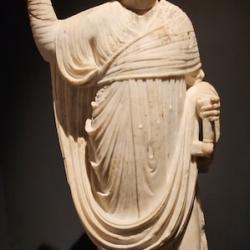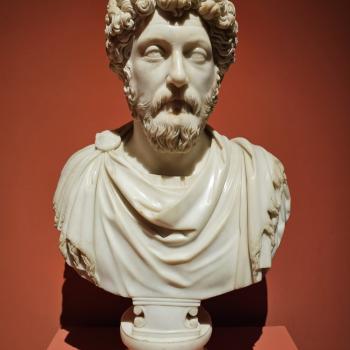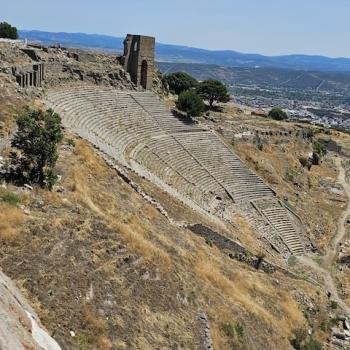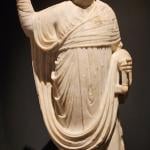Ephesos is the Greek name for the city (Ephesus the Latin one), and it refers to bees, hence the bee on the coin.
The patron deity of the city, Artemis is represented on the other side of the coin, by the deer or stage. The Roman name for this deity was Diana, the goddess of the hunt. In Ephesos however the emphasis seems to have been on Artemis as a goddess of health, hygiene, fertility.
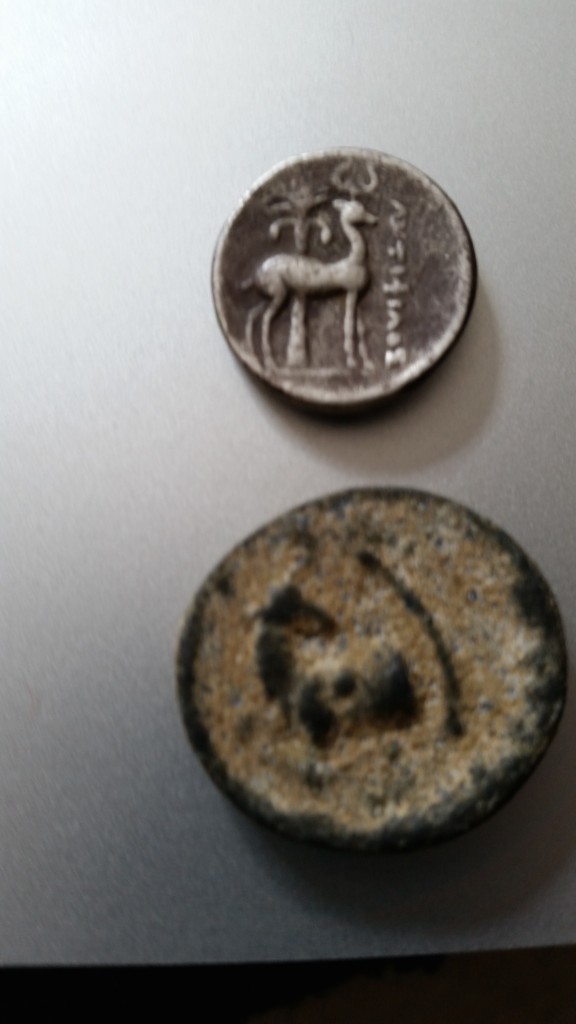
The city of Ephesos was nestled between two harbors and involves a couple of long streets that wove their way down to the harbor, which, like the river Meander silted up, and is now a fertile plain. The loss of the harbor was a big blow, and then like most of these grand cities in Turkey the coup d’grace was a devastating earthquake which destroyed the town (see also Colossae, Laodicea, etc.). Here is a schematic of what we will see, moving from 1 on the map at the top of the site, to 20 (the great theater) at the bottom of the map.
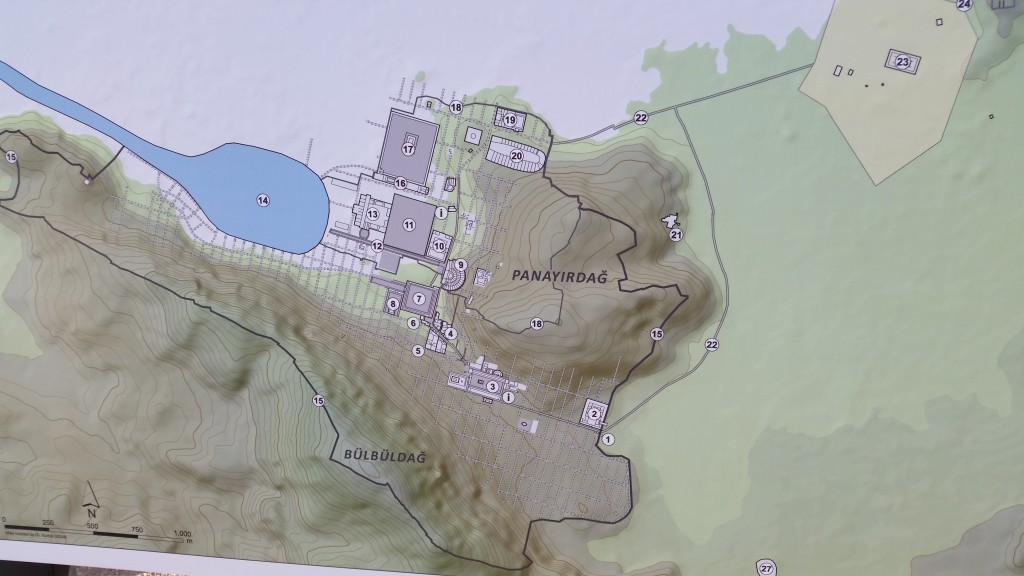
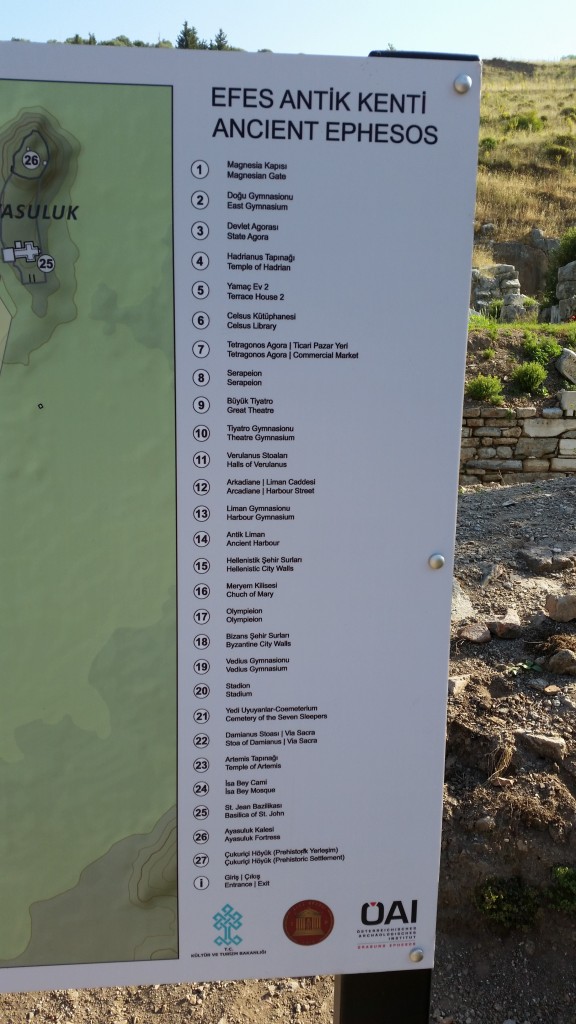
Here’s the large hill to the left of the city, which includes the cave of Paul and Thecla.
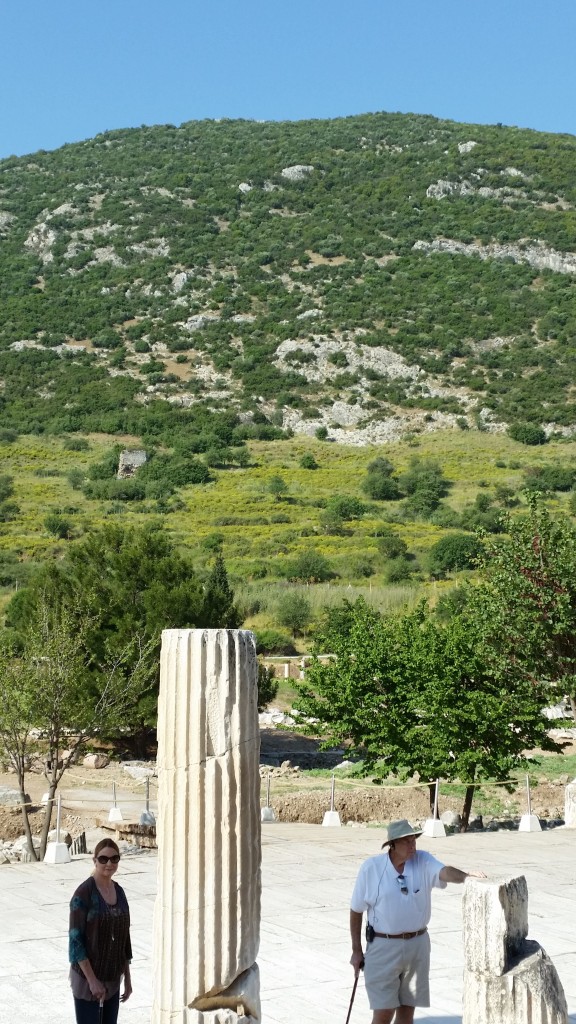
Ephesos was a big city, and like most such cities it had water issues. Here is some of the pipes which brought fresh water into the center of the city.
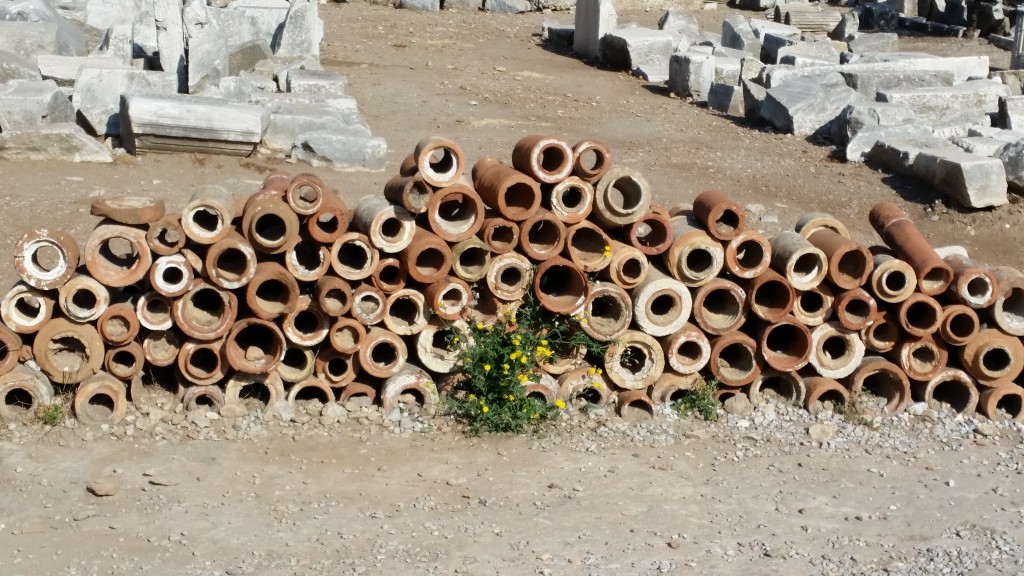
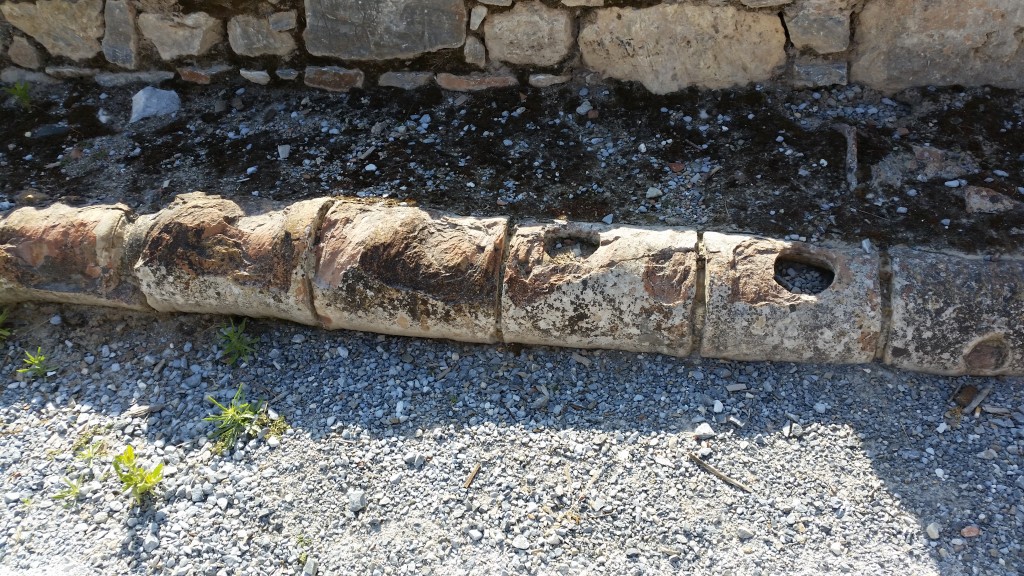
Our first major building of concern is the bouleterion, or town council building. It is here where the city clerk’s office would have been, so it is understandable that he might not have initially heard or heard about the hubbub in the theater at the other end of town where the riot with chants of ‘great is Artemis’ took place against Paul’s activities. Remember that Paul stayed in this city for two and half years. They still haven’t found the Hall of Tyrannus where Paul lectured, but my bet is it will be found near the Celsus library.
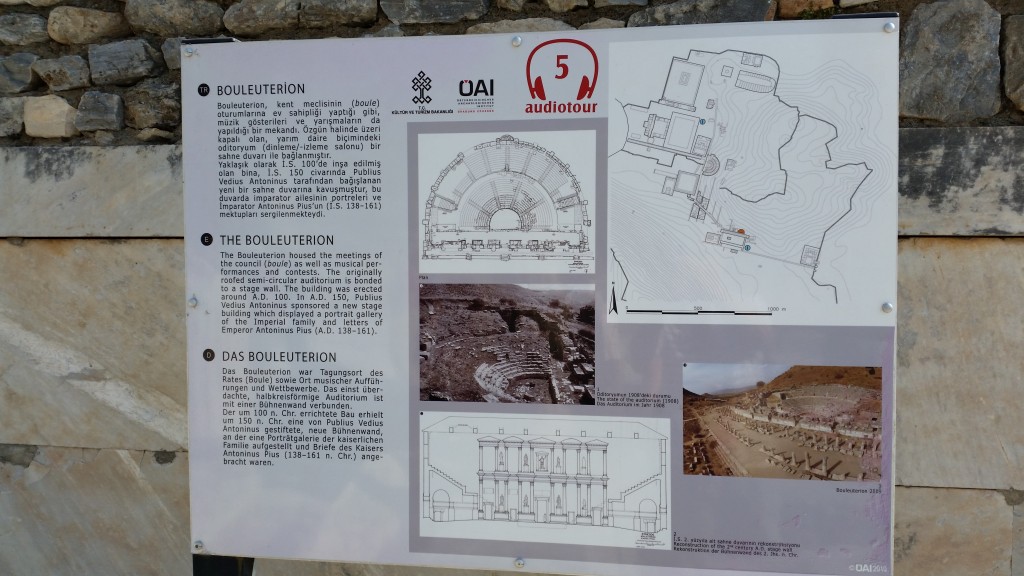
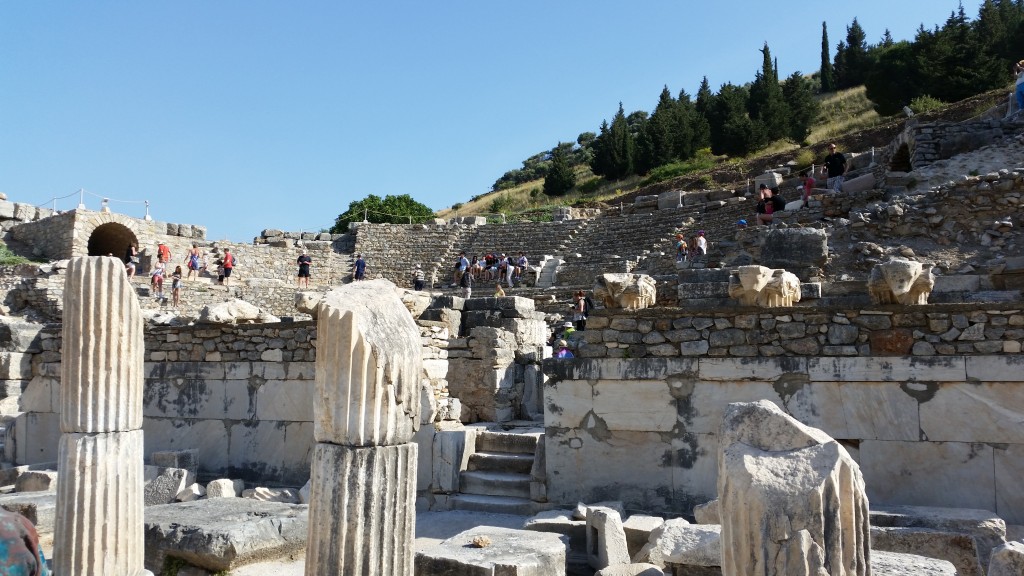
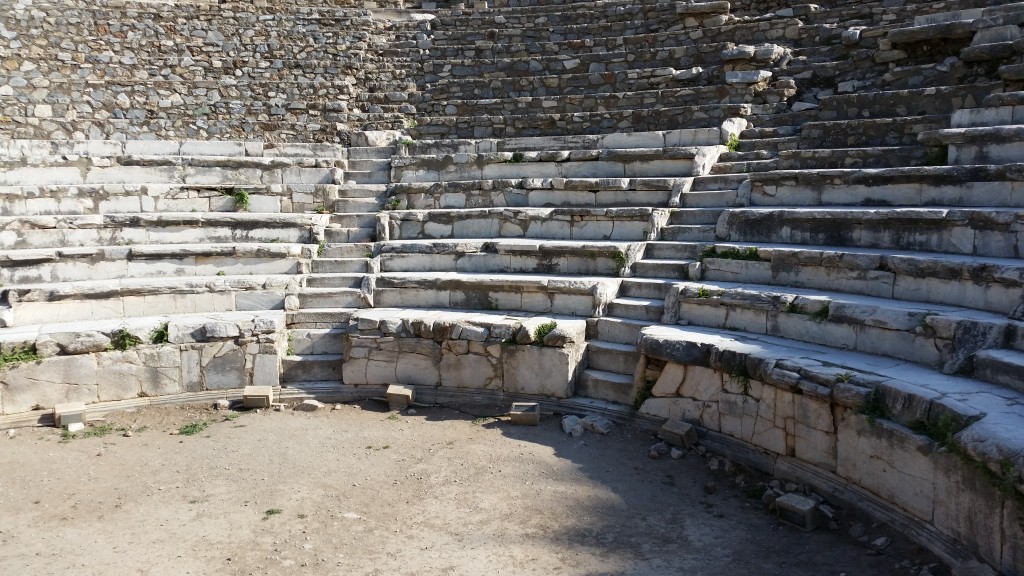
Here is a keystone arch, which is probably what Paul is referring to when he calls Christ a stone in Ephesians. The keystone hold things together from above (otherwise you have fallen arches 🙂 In this case, Christ is hold the Jew and Gentile branches of the church together from above, having torn down the middle wall of partition which once separated the,
And here’s a bull-headed column….
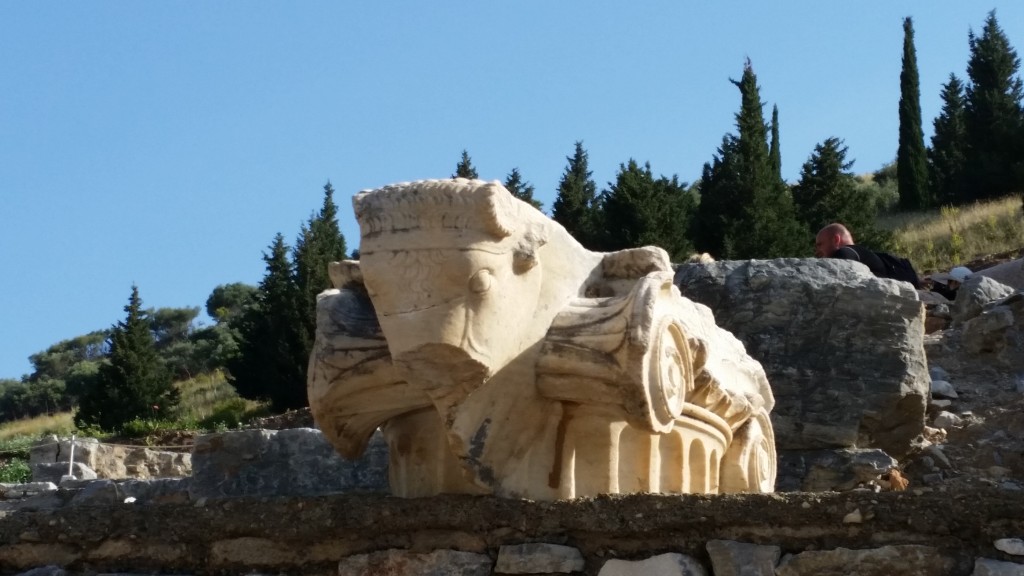
Here is the street view from beside the bouleterion.
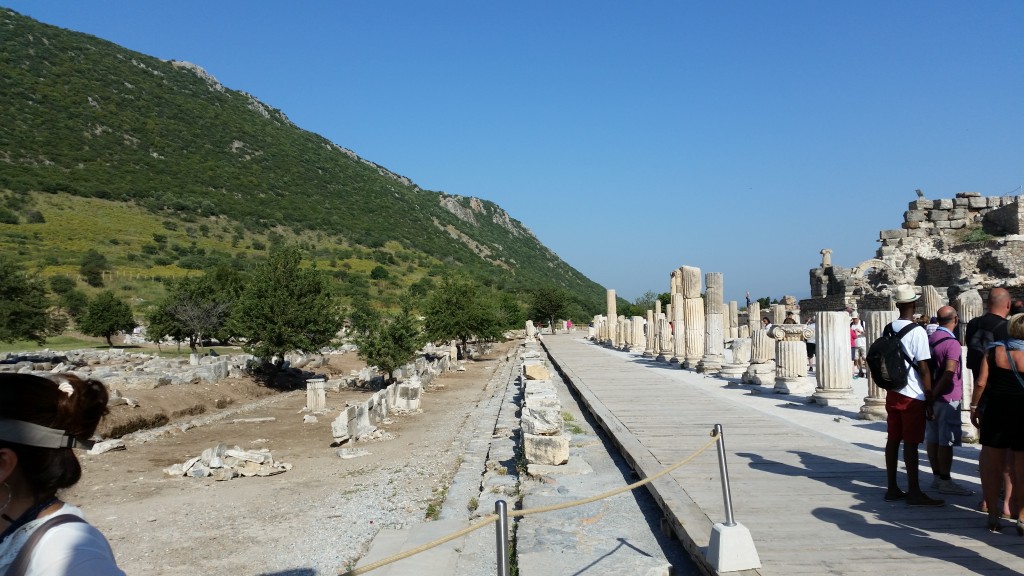
If you are wondering how you keep the capstone of a column in place, here’s a good clue. There are nobs on the bottom of this capital. There were matching dimples or depressions in the pedestal on which it would be placed— voila!
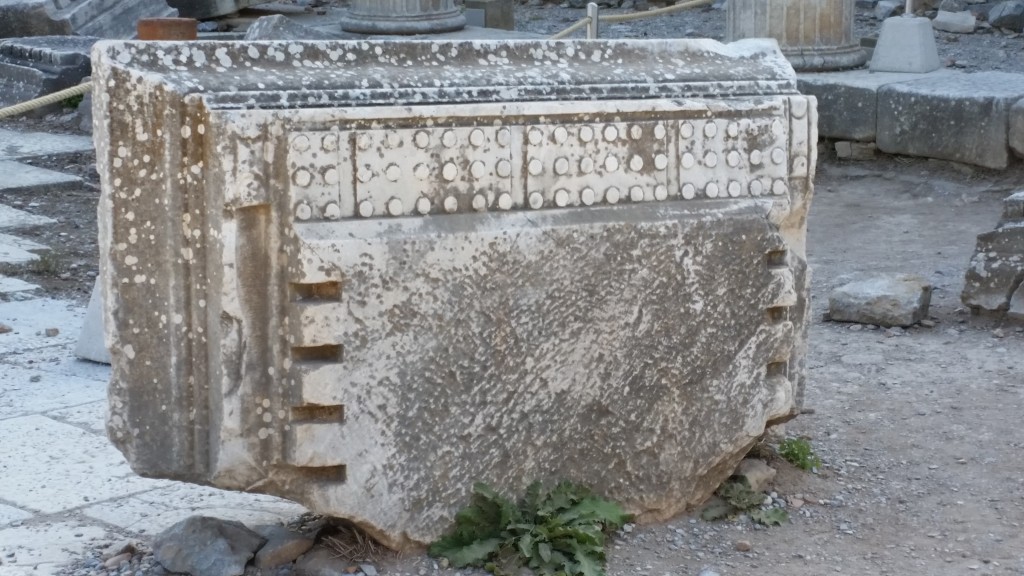
As we look down the slope toward Curetes Street there is much we have to look forward, much to explore in subsequent posts.
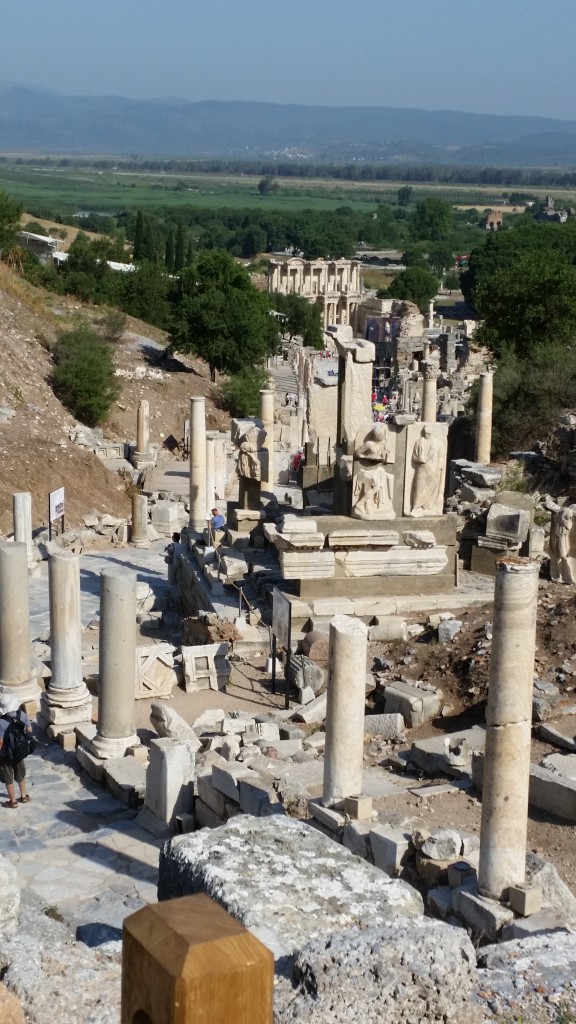
Notice the fertile green field in the distance. That was once under water.


